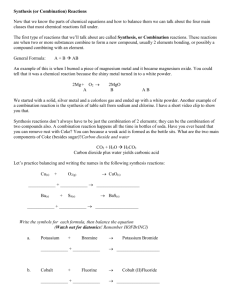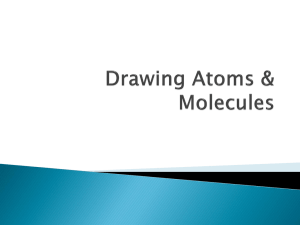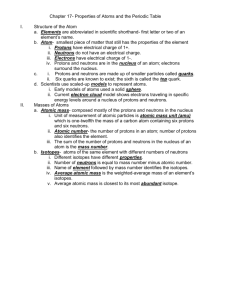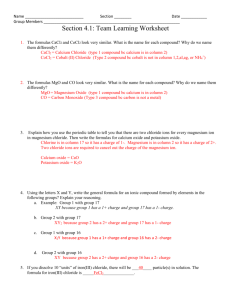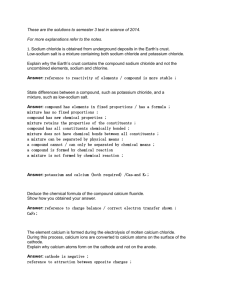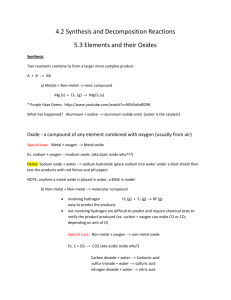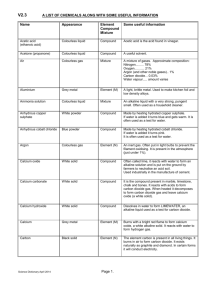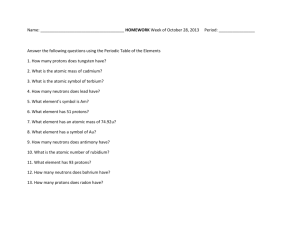Chemistry - Sample Exam Questions (Student Book)
advertisement
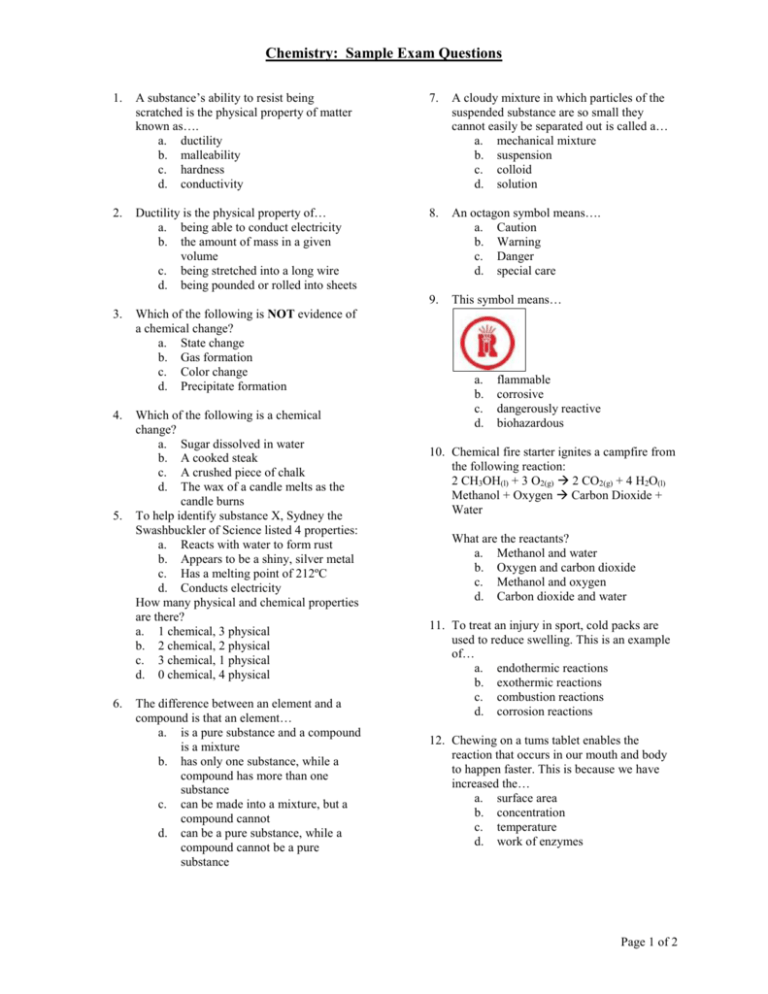
Chemistry: Sample Exam Questions 1. A substance’s ability to resist being scratched is the physical property of matter known as…. a. ductility b. malleability c. hardness d. conductivity 7. A cloudy mixture in which particles of the suspended substance are so small they cannot easily be separated out is called a… a. mechanical mixture b. suspension c. colloid d. solution 2. Ductility is the physical property of… a. being able to conduct electricity b. the amount of mass in a given volume c. being stretched into a long wire d. being pounded or rolled into sheets 8. An octagon symbol means…. a. Caution b. Warning c. Danger d. special care 9. This symbol means… 3. Which of the following is NOT evidence of a chemical change? a. State change b. Gas formation c. Color change d. Precipitate formation 4. 5. 6. Which of the following is a chemical change? a. Sugar dissolved in water b. A cooked steak c. A crushed piece of chalk d. The wax of a candle melts as the candle burns To help identify substance X, Sydney the Swashbuckler of Science listed 4 properties: a. Reacts with water to form rust b. Appears to be a shiny, silver metal c. Has a melting point of 212ºC d. Conducts electricity How many physical and chemical properties are there? a. 1 chemical, 3 physical b. 2 chemical, 2 physical c. 3 chemical, 1 physical d. 0 chemical, 4 physical The difference between an element and a compound is that an element… a. is a pure substance and a compound is a mixture b. has only one substance, while a compound has more than one substance c. can be made into a mixture, but a compound cannot d. can be a pure substance, while a compound cannot be a pure substance a. b. c. d. flammable corrosive dangerously reactive biohazardous 10. Chemical fire starter ignites a campfire from the following reaction: 2 CH3OH(l) + 3 O2(g) 2 CO2(g) + 4 H2O(l) Methanol + Oxygen Carbon Dioxide + Water What are the reactants? a. Methanol and water b. Oxygen and carbon dioxide c. Methanol and oxygen d. Carbon dioxide and water 11. To treat an injury in sport, cold packs are used to reduce swelling. This is an example of… a. endothermic reactions b. exothermic reactions c. combustion reactions d. corrosion reactions 12. Chewing on a tums tablet enables the reaction that occurs in our mouth and body to happen faster. This is because we have increased the… a. surface area b. concentration c. temperature d. work of enzymes Page 1 of 2 Chemistry: Sample Exam Questions 13. The periodic table is organized by the patterns of the properties of the elements. The rows in the period table vary with the amount of elements they contain. These rows are called… a. groups b. families c. periods d. metals 14. The characteristic Dimitri Mendeleev used to create the pattern we now call the periodic table is… a. color b. atomic number c. atomic mass d. symbol 15. John Dalton’s theory proposed that: a. atoms have a core called a nucleus b. invisible electrons were part of an atom c. all atoms of an element have the same mass and size d. the neutrons in an atom carry no charge 16. Several models of what the atoms may have looked like were made. One of the earlier models, representing the atom as a positively charged sphere with negatively charged electrons embedded, was developed by: a. Bohr b. Thompson c. Nagaoka d. Rutherford 17. The current atomic theory states that: a. protons, neutrons and electrons are equal in mass b. the mass of protons is so small that it is not considered in atomic mass calculations c. the atomic mass of an element is the sum of neutrons and electrons d. positively charged particles are found in the nucleus 18. The normal ionic charge of calcium is 2+. This means that the calcium ion a. Lost 2 protons b. Gained 2 electrons c. Lost 2 electrons d. Gained 2 protons 19. Potassium has an atomic number of 19 and a mass of 39.10. How many neutrons does one atom of potassium contain? a. 39 b. 19 c. 20 d. 48 20. When ionic compounds are formed, the ions combine to form a… a. crystal b. block c. irregular pattern d. cloud 21. Use the information in the following table to answer this question. Compound Melting Point Boiling Point (ºC) (ºC) Baking soda 455 1550 Carbon dioxide Sublimates -79 Rubbing alcohol -90 82 Salt 801 1413 The molecular compounds from the table above are… a. baking soda and salt b. rubbing alcohol and salt c. carbon dioxide and baking soda d. carbon dioxide and rubbing alcohol 22. What is the chemical name for CaO? a. Calcium oxygen b. Calcium oxide c. Calcide oxygen d. Calcide oxide 23. What is the common name for CaCl2? a. Sour gas b. Table sale c. Lime d. Road salt 24. N2O3 is a molecular compound. The chemical name is… a. trinitrogen oxide b. dinitrogen oxide c. trinitrogen dioxide d. dinitrogen trioxide 25. The chemical formula for calcium chloride is… a. Ca2Cl b. CaCl2 c. 2CaCl d. Ca2Cl Page 2 of 2

